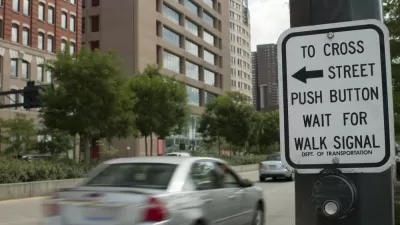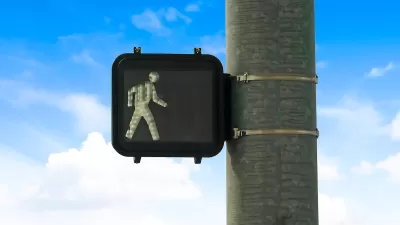Over a quarter of city blocks lack sidewalk infrastructure. An advocacy project to reduce traffic speeds and increase pedestrian safety on these streets has evolved into a city-funded program.

In Seattle, 45,000 blocks lack sidewalks, and last year the Seattle Neighborhood Greenways, a neighborhood-based, volunteer coalition, launched a DIY program to make streets safer for pedestrians. "The concept is called Home Zones and is meant to create 'living streets' that can be shared between cars and people," writes Emily Nonko.
After a Home Zones pilot program in a north Seattle neighborhood, the Seattle City Council allocated $350,000 for an expanded program. "The greater vision of Home Zones, according to [Gordon] Padelford, is installing a combination of speed humps, traffic diverters, wayfinding signage and public artwork — lower-cost options in lieu of sidewalks," notes Nonko.
The Seattle Department of Transportation is overseeing the official pilot program, which will be implemented in two neighborhoods. But advocates say progress has been slow and the program still has not been fully funded. They also want to see more funding in next year’s city budget for implementable low-cost alternatives to sidewalks.
FULL STORY: DIY Initiative Addressing Lack of Seattle Sidewalks Becomes a City Pilot

Planetizen Federal Action Tracker
A weekly monitor of how Trump’s orders and actions are impacting planners and planning in America.

Restaurant Patios Were a Pandemic Win — Why Were They so Hard to Keep?
Social distancing requirements and changes in travel patterns prompted cities to pilot new uses for street and sidewalk space. Then it got complicated.

Map: Where Senate Republicans Want to Sell Your Public Lands
For public land advocates, the Senate Republicans’ proposal to sell millions of acres of public land in the West is “the biggest fight of their careers.”

Maui's Vacation Rental Debate Turns Ugly
Verbal attacks, misinformation campaigns and fistfights plague a high-stakes debate to convert thousands of vacation rentals into long-term housing.

San Francisco Suspends Traffic Calming Amidst Record Deaths
Citing “a challenging fiscal landscape,” the city will cease the program on the heels of 42 traffic deaths, including 24 pedestrians.

California Homeless Arrests, Citations Spike After Ruling
An investigation reveals that anti-homeless actions increased up to 500% after Grants Pass v. Johnson — even in cities claiming no policy change.
Urban Design for Planners 1: Software Tools
This six-course series explores essential urban design concepts using open source software and equips planners with the tools they need to participate fully in the urban design process.
Planning for Universal Design
Learn the tools for implementing Universal Design in planning regulations.
Heyer Gruel & Associates PA
JM Goldson LLC
Custer County Colorado
City of Camden Redevelopment Agency
City of Astoria
Transportation Research & Education Center (TREC) at Portland State University
Camden Redevelopment Agency
City of Claremont
Municipality of Princeton (NJ)





























